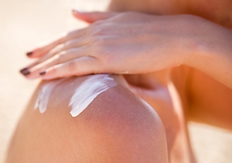You are here: Home » Insight hub » Case Studies » Croda & Lucideon Further Optimize Coating Coverage and Application
Croda & Lucideon Further Optimize Coating Coverage and Application
Introduction
TiO2 is commonly used in sun creams and polymer products to offer protection against UV radiation. Titanium dioxide is a photoactive material and it is coated to reduce the photo activity for cosmetic applications. Coating of the titanium dioxide has other benefits and through judicious coating technology there is the potential to add novel and sensorial effects to final formulated products.
The Challenge
Croda wanted to test for effective coverage of TiO2 powder after different coating steps. Knowing that TiO2 and the different coating materials each possess a unique surface charge, and so zeta potential, it was postulated that the effectiveness of a given coating could be determined by measuring changes in the zeta potential.
What We Delivered
Lucideon (then Ceram) performed zeta potential vs pH measurements on (i) uncoated TiO2 samples and then (ii) samples that had undergone different coating regimes associated with adding the first coating, second coating and so forth. After each coating process, the zeta vs pH profile changed dramatically, with the degree of change proven to be a good measure of “quality of coverage”. Testing also showed that each layer was being chemically attached to the previous layer to create a multilayer coating on the TiO2 particle.
Value to the Client
Using zeta potential vs pH analysis, Lucideon and Croda were able to (i) demonstrate when 100% coating coverage had been achieved at each coating stage (key for the generation of a reliable high grade TiO2 powder) and (ii) avoid unnecessary material costs associated with applying too thick a layer at each stage.
It also showed that the layers were attached to the previous layer and also showed the coating had a high degree of integrity on the base TiO2.
